Children with chronic pain: This all-women KKH team is helping them reclaim their lives
For many children living with chronic pain, the experience is often misunderstood and isolating. An all-women interdisciplinary team at KKH is determined to change that by helping these young patients and their families understand chronic pain and manage the invisible condition.
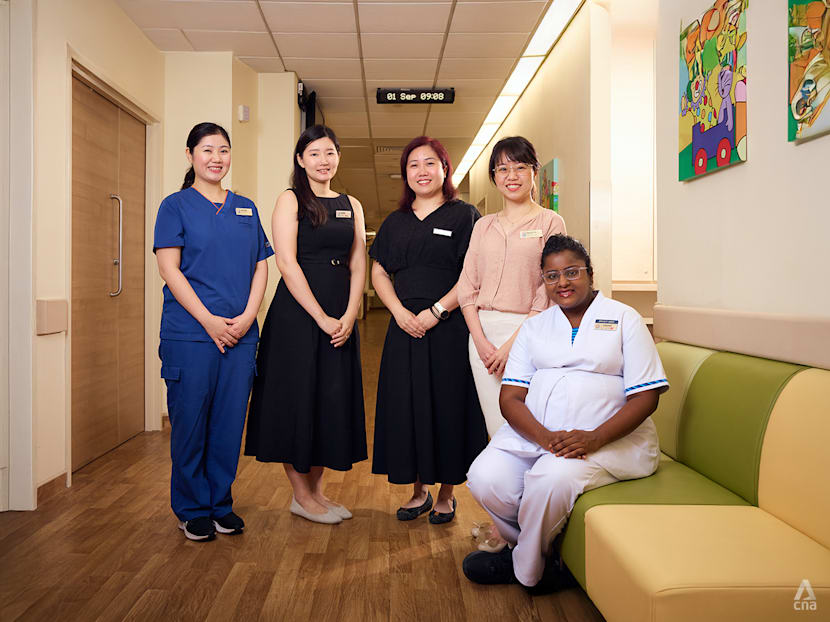
(From left) The team at the Children’s Pain Management Clinic at KK Women’s and Children’s Hospital includes senior physiotherapist Lew Si Min, psychologist Ho Yang, clinical director of Children’s Pain Service Dr Angela Yeo, senior occupational therapist Png Hui Jun and pain specialty care nurse Narayani Jayakrishnan. (Photo: CNA/Dillon Tan)

This audio is generated by an AI tool.
Your 12-year-old child is clutching her leg, wincing in pain. The injury that started it all has healed, yet her pain has stretched on for months. She can’t sleep well and has not been able to go to school.
You’ve seen several doctors, sat through tests, and heard the same thing: “Hmm, everything looks normal.” A paediatrician suggests stress. Someone else comments that kids today are “too soft, too sensitive”. In your frustration, you wonder if she could be faking it.
This is the isolating reality many children with chronic pain live in. Pain may not show on an X-ray or blood tests, yet it takes a very real toll.
Chronic pain – defined as pain that persists for three months or more, the time it usually takes for tissue to heal – is different from acute pain, which is a sudden, short-term pain that is caused by something specific.
In Singapore, chronic pain is estimated to affect around one in 11 people, becoming more common after the age of 65, according to a 2009 study.
Children can get chronic pain too, though the condition is less talked about, leaving them vulnerable to its debilitating effects and stigma. A 2024 meta-analysis in the journal Pain found that it affects approximately one in five children and adolescents.
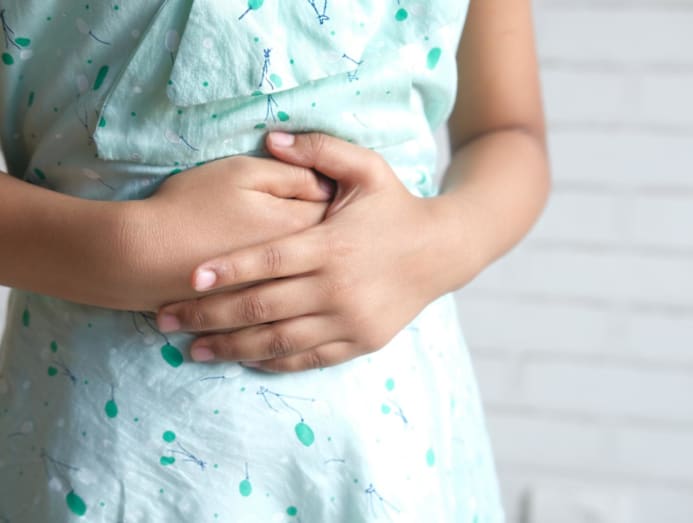
For many young patients, this silent suffering continues. That is, until they meet the team behind the Children’s Pain Management Clinic (CPMC) at KK Women’s and Children’s Hospital (KKH).
This all-women team has made it its mission to support children and teens up to 18 years old struggling with chronic pain, some for years on end. For some children, it may be the first time that they feel validated, that their pain is not imagined.
Led by Dr Angela Yeo, senior consultant at KKH’s Department of Paediatric Anaesthesia, the 11-member team includes experts from different disciplines. Alongside pain physicians are physiotherapists, occupational therapists, psychologists and a pain care nurse. Dr Yeo herself is a paediatric anaesthesiologist and pain medicine specialist.
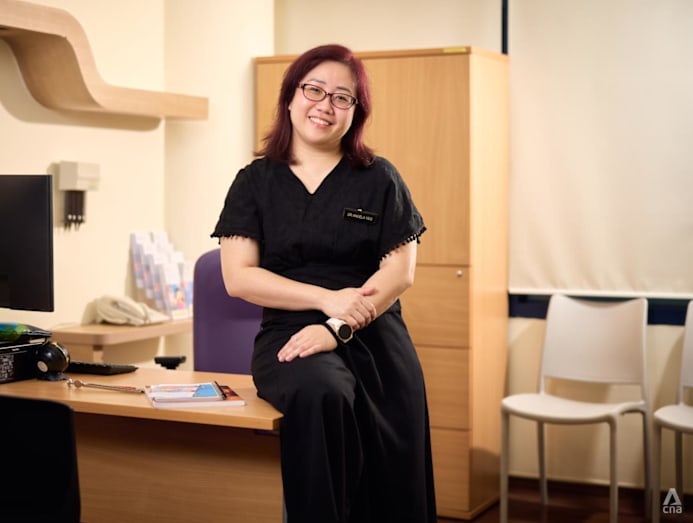
According to KKH, the CPMC is the first and currently only interdisciplinary children’s pain management clinic in Singapore and the region. Since its launch in 2005, the team has seen an increasing number of patients.
Dr Yeo, who is also the clinical director of the Children’s Pain Service at KKH, said the team often meets children and their parents who have come to the “end of their tether” trying to find answers.
“It’s one thing to be in bad pain. But when even your parents are conflicted and can’t decide whether or not to believe you – because they’ve seen multiple specialists and everyone tells them they can’t find anything – that adds to their distress and suffering,” said Dr Yeo.
On average, five to six new cases are referred to the team each month, the majority of which are referred from other specialities within KKH. From 2022 to 2024, the team managed above 100 cases each year.
According to Dr Yeo, most patients seen in CPMC are teens aged 13 to 18, with 10 to 12 year-olds being the second largest group. Their youngest patient is only five years old.
WHY CHRONIC PAIN OCCURS, EVEN IN KIDS
Common chronic pain conditions seen include chronic headaches, recurrent abdominal pain and persistent musculoskeletal pain, which can be accompanied by other symptoms such as fatigue, nausea and brain fog.
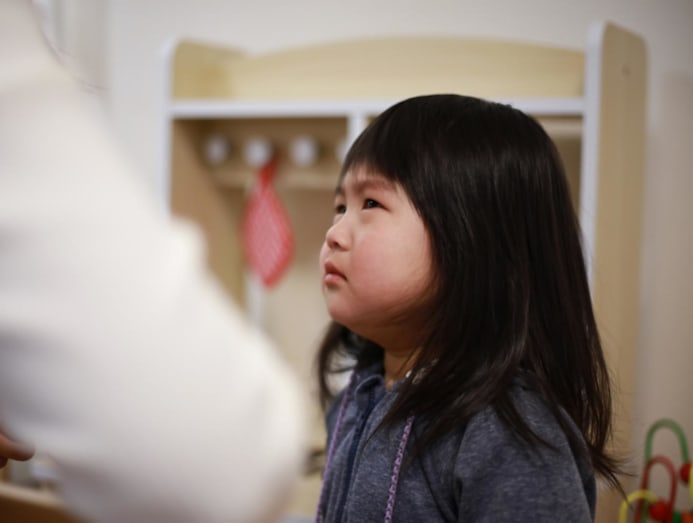
Some children experience primary chronic pain disorders, such as migraines, where the pain itself is the problem, and not caused by something else.
In others, an illness or injury may trigger chronic pain. A child who had a gastrointestinal infection for instance, may later develop irritable bowel syndrome that can cause bloating and tummy pain, explained Dr Yeo.
There is often no single cause of chronic pain. According to the team, it is usually shaped by a mix of biological, psychological and social factors – described as the biopsychosocial model. Genes, physical stressors, school pressure, family conflict and dysfunction, childhood trauma and even personality traits can affect how pain is experienced.
Ho Yang, a psychologist at KKH’s Psychology Service, explained that the mind and body are not separate – they constantly “talk” to each other. “The mind-body connection in persistent pain does not mean that the pain is imaginary. Pain is always real,” Ho emphasised.
“What research shows is that pain is processed in the nervous system and the brain – and that system is influenced by our thoughts, emotions, and stress levels.
“For example, if someone is anxious or under pressure, the body releases stress hormones and the nervous system becomes more sensitive, which can make pain feel more intense,” Ho said.
The mind-body connection in persistent pain does not mean that the pain is imaginary. Pain is always real.
For individuals who are vulnerable to chronic pain, an injury or illness can act as “the final straw that breaks the camel’s back”, tipping them into chronic pain, added Dr Yeo.
Pain that drags on for too long can change how the body, nerves and brain process it, she explained. In other words, chronic pain becomes the body’s default mode – challenging to switch off, even if the illness or injury has resolved.
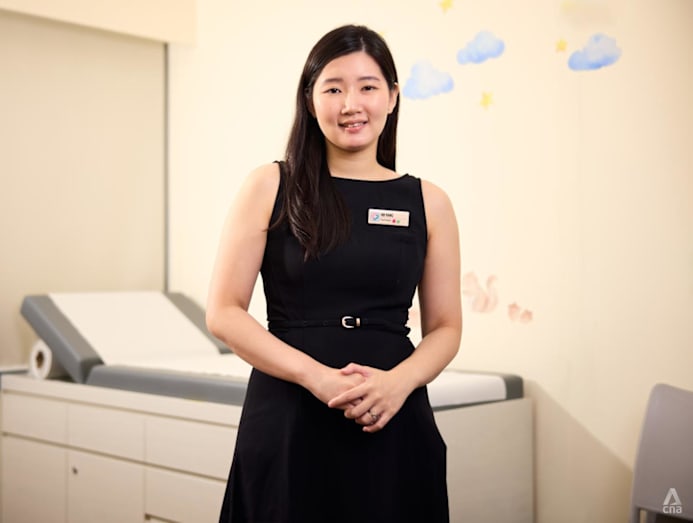
Dr Yeo uses everyday analogies to help parents understand that their child’s pain is real, even when tests may not show anything unusual. “For example, even if the screen of a phone is intact, you can’t actually tell whether it is functioning well – maybe the speaker’s faulty, the audio and video calls don’t work. Just because everything looks fine on the surface doesn’t mean everything is functioning correctly,” she said.
Untreated, chronic pain can set off a vicious cycle. A child may avoid movements that cause pain, but this leads to physical de-conditioning and social isolation.
“It’s not just about being physically deconditioned. From a social and emotional perspective, everything starts to go downhill, like you’re spiralling into an abyss,” said Dr Yeo.
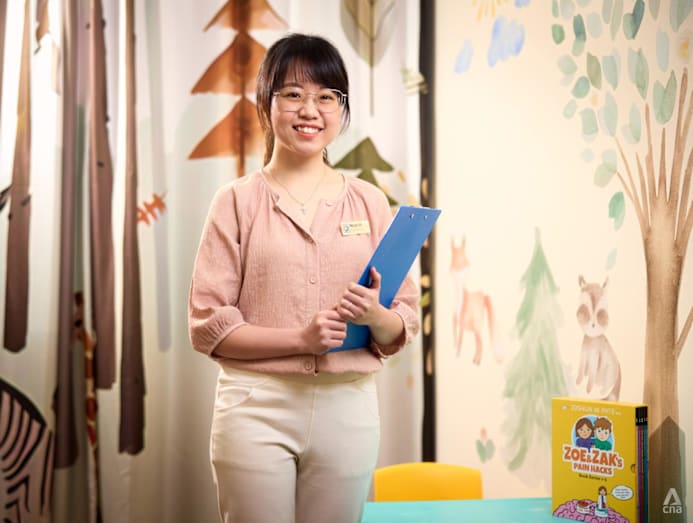
To prevent children from reaching that stage, KKH introduced the RECAP (Resilience in Children and Adolescents with Psychosomatic Symptoms) programme in 2020 and GPRECAP (General Paediatrics RECAP) in 2022. These programmes help children with mild to moderate symptoms receive help earlier, preventing them from progressing to a state of severe and persistent pain, said Dr Yeo.
For children referred to the CPMC, the team’s job is to break that fall and equip children and their families with the right tools “to help them climb back up”, said Dr Yeo.
HELPING CHILDREN TAKE BACK CONTROL
There is no magic pill or one-size-fits-all solution to make the pain go away. The team takes an interdisciplinary approach to support the child.
Medication, while sometimes prescribed at the beginning, is not a long-term solution for children, said Dr Yeo.
“On top of that, some medications that we use, like anti-neuropathics (medication to calm overactive nerve signals), have side effects like brain fog, which the kids hate. Imagine sitting through your O-Levels with brain fog,” Dr Yeo added.
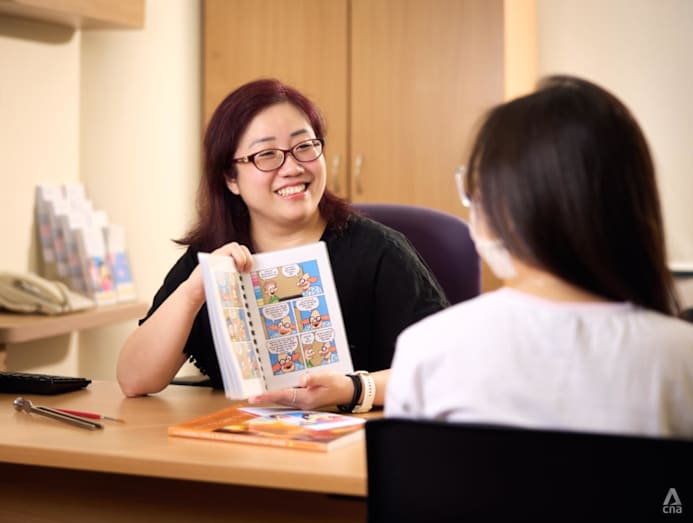
Treatment always includes educating patients and their parents on what chronic pain is, what influences pain, how to spot triggers and break out of the “pain-fear cycle”, said Png Hui Jun, senior occupational therapist at KKH’s Occupational Therapy Service.
“Once they understand this, some patients will then recognise the rationale in moving or increasing their activity levels,” she said.
Png has seen children with chronic pain struggle with even simple activities like showering and eating. They may stop joining family meals, attending school, miss exams and going out with friends. Fatigue often comes hand-in-hand with pain.
“When we’re in pain, we feel tired and unwell, and part of our thoughts is channelled towards ‘how am I going to deal with this?’. The brain is doing extra work to process the pain, and that can get really draining,” Png explained.
As an occupational therapist, her role is to help children regain their daily function by building practical skills: Improving sleep habits, learning how to self-regulate, pacing themselves and setting small achievable goals.
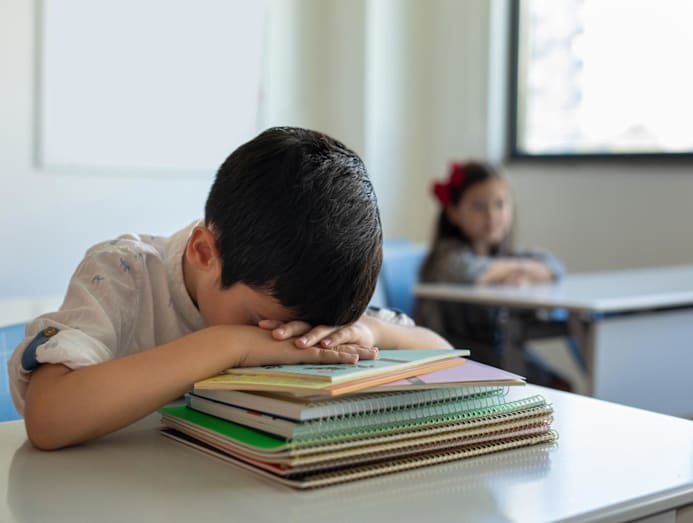
Ho, the psychologist, explained that many children living with chronic pain feel as though they’ve lost control of their lives, which fuels anxiety and fear.
Psychologists on the team help by addressing the thoughts, feelings and behaviours that may either stem from chronic pain, or worsen it. This is done through coping strategies, relaxation techniques and challenging negative beliefs about their pain.
“Many of these kids tend to have lot of anxiety, which leads to their tendency to catastrophise,” said Ho. “They worry about what will happen to them in the future or the pain returning. We work through their concerns to prepare them to be more confident to start moving and engaging in activities again.”
For the team, every little milestone counts – whether it’s walking down the corridor after weeks of being immobile or finally using a hand or leg that the child avoided due to pain.
“We celebrate these wins with our patients when they successfully achieve the goals that they set out for themselves,” said Png. “We often tell the child that life should not start only when pain goes away. But as life continues, pain may go away.”
The most rewarding moments, added Dr Yeo, are when a child or teenager once consumed by pain begins to reclaim control over life.
“When they go from being miserable, socially isolated to doing everyday teenage things, and then they come back and tell me about it – I’ll go, ‘yes!’,” she said with a smile. “They may have bad pain days, but they learn to handle it. They’re embracing life again on their own terms.”
The team has learnt a lot from working with these young patients too. “They are incredibly resilient,” said Ho. “Living with pain is never easy, yet many of them find ways to adapt… and dream big. They teach me every day about courage, patience and the importance of not letting challenges define who we are.”
CNA Women is a section on CNA Lifestyle that seeks to inform, empower and inspire the modern woman. If you have women-related news, issues and ideas to share with us, email CNAWomen [at] mediacorp.com.sg (CNAWomen[at]mediacorp[dot]com[dot]sg).




